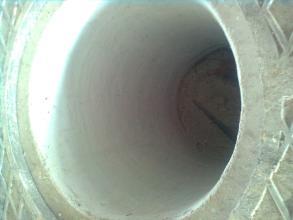Sintering method of intermediate frequency furnace lining
The lining of the intermediate frequency furnace is the filler between the induction coil and the metal that is heated and melted. It consists of 3 layers: a refractory layer, a thermal insulation layer and a thermal insulation layer. The refractory layer is made of refractory materials and is put into use after being sintered at high temperature.
The high temperature performance of the intermediate frequency furnace lining mainly depends on the material and chemical properties of the refractory materials and wheel lining masonry materials. The sintering process of the intermediate frequency furnace lining is also a key factor affecting the structure and high temperature resistance of the intermediate frequency furnace lining. Therefore, the sintering method of the intermediate frequency furnace lining is important to improve the The efficiency of the furnace has a certain impact.
First, the method of building an intermediate frequency furnace
1. Selection of furnace building materials
(1) Selection method: Not all quartz sands with SiO2 greater than or equal to 99% can be used as lining materials for intermediate frequency furnaces. The main content of our investigation is the grain size in time. The coarser the grains, the fewer lattice defects, the better. ( For example, quartz sand with high purity, white appearance and good transparency) the larger the furnace capacity, the higher the requirements for particle size.
(2) Material ratio: The ratio of quartz sand for furnace lining is divided according to the size of quartz sand: 6-8 mesh, 10 percent-15 percent, 10-20 mesh, 25 percent-30 percent, 20-40 mesh, 25 percent-30 percent ,270 mesh 25%-30%.
2. The furnace construction process of the intermediate frequency furnace:
(1) The mica paper needs to be removed when building the furnace.
(2) Screen the crystalline quartz sand required for the furnace construction time:
a, hand selection: mainly to remove impurities such as hard blocks;
b, Magnetic separation: remove magnetic impurities in quartz sand by magnetic force;
(3) Dry ramming material: The ramming material needs to be dried slowly, the drying temperature is 200 degrees Celsius - 300 degrees Celsius, and the holding time should be controlled at more than 4 hours.
(4) Selection of binder for medium frequency electric furnace: use boric anhydride (B2O3) instead of boric acid (H3BO3) as binder, and the addition amount is 1.1%-1.5%.

Related News
- Introduction of construction method of ramming material in intermediate frequency furnace
- How to choose the material of furnace lining
- The difference between rammer and castable
- Application direction of intermediate frequency furnace refining
- Introduction to the construction method of dry ramming material
- Do you know the production process and control points of breathable bricks?
- The application of argon blowing technology at the bottom of the intermediate frequency furnace
- Method for prolonging service life of intermediate frequency furnace lining
- In addition to diffused breathable bricks, there are those types of breathable bricks
- What are the advantages of coil cement
- What are the requirements for the production materials of breathable bricks?
- Composition and function of neutral ramming mass
- What material is the surface layer of the breathable brick?
- What type of ramming material is used in industrial casting?
- Precautions for construction of coil cement
- What material is used for the lining of the intermediate frequency furnace?
- Matters needing attention in the knotting process of ramming material
- What does coil glue do?
- Application of breathable brick in industry
- Why do you need to heat up slowly when firing breathable bricks?


